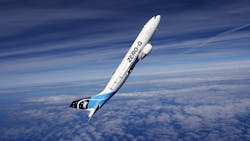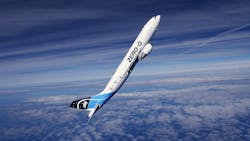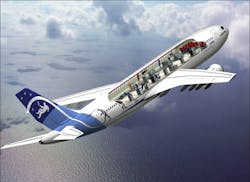Airbus A310 ZERO-G aircraft to log weightless flight from Switzerland airport
BORDEAUX, 9 June 2015. The Airbus A310 Zero-G will perform two weightless flights from Zürich-Dübendorf Airport on the 21st and 22nd of September 2015 – marking the first time the novel aircraft will be operated from a country other than France – as the result of a partnership between the University of Zurich and Novespace.
The Airbus A310 Zero-G will take off from Dübendorf airbase, northeast of Zurich, considered the cradle of Swiss civil and military aviation since 1910. With the University of Zurich, Novespace inaugurates a new approach: a first flight campaign outside France and a partnership formed with a foreign university.
Researchers at the University of Zurich (UZH), a prestigious Swiss university and member of the League of European Research Universities (LERU), have been participating in parabolic flights organized by Novespace for 10 years. “They were given the opportunity to develop skills as well as many experiments in weightlessness to the point that a strong demand for parabolic flights now exists in the laboratories of the UZH and other Swiss universities and research institutions,” officials say.
Weightlessness discovery flights will be sold to a nonprofessional public. The profits collected will allow the University of Zurich scientific teams to fly, in turn, on board Airbus A310 Zero-G to conduct their experiments. This particular "fundraising" can also be strengthened through donations. The organizers calling their concept: “Support research for tomorrow – experience weightlessness today.”
Since May 2015, scientific teams from all over Europe get on board the Airbus A310 Zero-G for flights in weightlessness. It allows them to study phenomena and forces, which cannot be observed on ground as they are hidden by gravity. The 10,000 scientists who have been selected for flights since the beginning of the program in Europe (1989) were able to observe, understand and model behaviors, reactions, phenomena in fields as diverse as Physiology, Biology, Material Science, Fluid Science, Combustion, Atomic Physics, etc.
At the occasion of the A310 Zero-G first flights on May 2015, 40 research teams were invited on board by the European Space Agency (ESA), the French Space Agency (CNES) and the Geman Aerospace Center (DLR).


